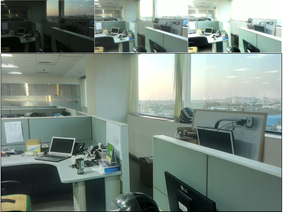This blog post was originally published at e-con Systems’ website. It is reprinted here with the permission of e-con Systems.
While resolution, sensitivity, and frame rate had been the definitive benchmarks for selecting a suitable industrial camera in the past, high dynamic range has become increasingly inevitable for applications involving challenging & varying light conditions. Dynamic range is the difference between the darkest and lightest tones in an image (which are generally pure black and pure white). Once the spectral range in a scene exceeds the camera’s dynamic range, the object captured will tend to wash out to white in the output image. The dark areas in the scene also appear darker. It’s difficult to capture the image with details in both ends of this spectrum. But with modern technologies like HDR and advanced post-processing, accurate reproduction of a scene can be done. HDR mode captures images and videos without losing details in bright and dark areas of a scene. This blog is intended to elaborately discuss how HDR works, and where to use HDR cameras.
What is High Dynamic Range (HDR)?
Many applications require images with optimal exposure time, where the bright areas aren’t too bright, and the dark areas aren’t too dim. In this context, dynamic range refers to the total amount of light being captured from a particular scene. If a captured image contains a lot of bright areas along with many dark areas covered in shadow or dim light, the scene could be described as having a high dynamic range (high contrast).
How an HDR camera works
An HDR image is usually obtained by capturing three images of the same scene, each at different shutter speeds. The result is a bright, medium, and dark image, based on the amount of light that got through the lens. The image sensor then combines all the photos to stitch together the entire image. This helps to create an image similar to what a human eye would see. This post-processing activity of taking either one image or a series of images, combining them, and adjusting the contrast ratios with a single aperture and shutter speed produces HDR images.

When should you use HDR cameras?
HDR cameras are designed to capture high-quality images regardless of lighting conditions. Let us have a look at how HDR is helpful in two extreme lighting conditions.
HDR camera for bright lighting condition
In bright indoor and outdoor lighting conditions, images captured in normal mode get overexposed, which results in detail loss. But images captured with an HDR camera will reproduce the exact scene in indoor as well as outdoor bright lighting conditions as shown in the image below.

HDR camera for low lighting conditions
In low lighting conditions, images captured by a normal camera are much darker and not clearly visible. In such a scenario, enabling HDR will brighten up the scene and produce good quality images.

e-con’s HDR cameras
e-con systems offers a wide range of HDR cameras for various applications. Following is a list of HDR cameras from e-con.
USB Cameras
- See3CAM_CU22 – Full HD HDR USB Camera with LFM
- See3CAM_CU20 – Full HD WDR HDR USB3.1 Gen1 Camera
- Hyperyon® – 2MP SONY STARVIS IMX290 Ultra Low-light USB camera
Camera Modules
- e-CAM21_CUMI290_MOD – 2MP IMX290 Camera Module
- e-CAM27_CUMI290_MOD – 2MP IMX290 Camera Module
- e-CAM20_CU0230_MOD – 2MP Industrial grade HDR Camera
Camera Boards for Embedded Vision
SerDes Cameras
Interested in knowing more about our camera solutions? Write to our camera solution experts at [email protected]!


